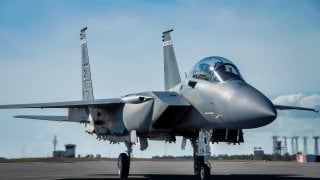Has World War III Already Begun?
Do the barbaric events of October 7, 2023, and the Israeli military campaign in Gaza prefigure a broader, global armed conflict?
Israel, the United States’ foremost ally in the Middle East, has once again come under attack by Hamas. In a recent post, we argue that Hamas attacked Israel on the behalf of Iran to derail the Abraham Accords between Israel and the Arabic Muslim countries including, most notably, an upcoming negotiation with Saudi Arabia. Such was the short-term occasion for the attack; over the medium run, Iran had engaged in a geostrategy of proxy encirclement, at two different scales: the local encirclement of Israel and a wider regional encirclement of Saudi Arabia.
Across the Middle East, Saudi Arabia faces adversaries: Iran and its clients and proxies across the Fertile Crescent – that is the lands from Iraq, through Syria, and on to the eastern Mediterranean coast in Lebanon – and in Yemen, to the south of Saudi Arabia, where the Houthis have launched rockets attacking Saudi pipelines. Furthermore, Iran has become deeply involved in the civil war in Sudan and has cooperated extensively with Qatar. Both are major supporters of Hamas, and Iran backed Qatar during the crisis in Qatari relations with Saudi Arabia in 2017. In addition to this geographically extensive encirclement of Saudi Arabia, there is ongoing effort to encircle Israel: To the North, Iranian proxies in Lebanon (i.e., Hezbollah) and, across the Golan Heights, the client state of Alawite Syria; to the east, the Palestinians in the territories of Jordan and the Palestinian Authority; in Israel, the Arab Israelis as a potential fifth column; and, to the west, in Gaza, the terror group, Hamas. An Israeli tie to Saudi Arabia would have provided Israel with legitimacy in the Arab Muslim world and, should the Iranians launch an attack on Saudi Arabia or Israel, shared intelligence, technology, and expertise could have contributed to mutual defense. For the foreseeable future, while the war in Gaza continues, negotiations between Israel and Saudi Arabia are unlikely to yield any public results.

Prime Minister Benjamin Netanyahu and his war cabinet recognized in the aftermath of the slaughter of October 7, 2023, that Hamas and Gazan civilians were inspired by a culture of hatred to commit acts of barbarism (here, here, and here) – rape, beheadings, mutilation, kidnappings, etc. – previously deployed by the Islamic State of Iraq and Syria. To respond to this attack along the Gaza frontier, and to cope with the threats emerging on the northern border, on the Golan, and in the West Bank, Israel called up 300,000 reservists. As of October 8, 2023, Israel’s standing army numbered 169,500, with the reserves numbering 465,000. This call-up has deleterious economic consequences: According to the Times of India, “JPMorgan Chase & Co. predicts that Israel's economy may shrink 11% on an annualized basis in the last three months of the year due to the ongoing conflict with Hamas.” The longer this war goes on, the greater the economic disruption. The longer the desired political and military outcome, eliminating Hamas in Gaza, remains in doubt, the greater the likelihood that Hezbollah and other Iranian proxies will enter the fray in a significant fashion. For Israel, deterrence, once lost in Gaza, must be forcefully and unambiguously restored, or its many regional enemies, including the Palestinians on the West Bank and potentially Muslims in Israel itself, may be inspired to launch intifadas, insurrections, and attacks. For Israel, the attack on 10/7 and its aftermath presented an existential threat, because it altered regional perceptions of the competence of the IDF (contra here).
The Attack on International Shipping
In our prediction, we suggested that the Iranian regime would once again disrupt maritime commerce by attacking international shipping that passed through the Strait of Hormuz. On January 11, 2024, Iran announced the seizure of a Greek-owned oil tanker in the Gulf of Oman, the waterway leading to the Strait of Hormuz. It is too soon to tell if this event is a one-off or the opening of a campaign.
However, we did not perceive that the Iranians would prompt the Houthis to disrupt maritime commerce in the Bab al-Mandab, the strait connecting the Indian Ocean and the Mediterranean Sea via the Red Sea and the Suez Canal. The Iranians have allegedly supplied the Houthis with advanced weaponry – missiles and unmanned aerial vehicles – for attacking Saudi pipelines and international shipping. Although the Houthis’ claim to be attacking Israeli shipping in response to the Gaza war, the fact that most of the ships that have been attacked are owned by non-Israeli nationals and are not traveling to or from Israel suggests that these attacks are part of an ongoing Iranian effort to disrupt flows of commerce passing through the Middle East. Such attacks are particularly harmful to the Egyptian regime, which derives an outsized portion of their revenues from canal fees and associated activity. Identifying the geographic, particularly the disruption at the Bab al-Mandab instead of at the Strait of Hormuz, proved elusive; however, we anticipated the Iranian intention.
Why did the Iranians turn to the Houthi proxy? The Iranians may have become more risk averse, acting indirectly through the Houthis; attacks through proxies are less likely to generate repercussions or counterattacks at home, as they are deniable. Meanwhile, Iranian proxies are also engaged in repeatedly attacking U.S. outposts and military bases in Iraq and Syria, and most egregiously the U.S. embassy in Baghdad. Iran has also issued a threat to attack shipping passing through the Strait of Gibraltar, presumably by mobilizing another proxy in Morocco. Such geostrategic darts, for want of a better word, thrown at the United States and maritime commerce have demonstrated Iranian opposition to the Israeli war in Gaza and an intent to compromise the passage of shipping over the high seas. It is unclear whether Iran’s leaders seek to drive the United States out of the Middle East, or whether they intend to draw the United States into a series of local counterinsurgencies against Iranian proxies, which would give Iran immense negotiating leverage.
As of the writing of this essay, these attacks at the Bab al-Mandab have led the United States and the United Kingdom to attack the Houthis, but the maritime coalition has not, as yet, used military force against Iranian interests or facilities to reestablish deterrence with regard to the sponsors of these proxy attacks. Certainly, these attacks serve to increase open-market prices for oil and gas; this helps Russian economic prospects. Also, China is likely paying fixed prices for sanctioned Iranian oil coming through the Straits of Hormuz; this likely helps explain why the Red Sea is being closed (to all but Chinese and Russian-aligned shipping) but Hormuz has thus far remained open.
What is of utmost importance here is this: the earlier a prediction, the more difficult it is to specify the date and location of any adversarial event, particularly a military attack. The fact that the Iranians have instigated attacks by Houthis at the Bab al Mandab instead of launching a campaign at Hormuz is less important than having correctly predicted Iran’s intentions amid a multi-front war. We advanced the claim that the Iranians would once again disrupt international shipping, which they have done through a proxy. Attacks at any major maritime choke point have consequences for supply chains across the world economy.
China and the Taiwan Front
The jury is still out regarding a final geopolitical prediction: Will Communist China resort to armed force to integrate Taiwan? Recently, the Chinese regime has sent warships into the seas near Taiwan to demonstrate a capacity to blockade that island. In addition, Chinese fighter jets have tested Taiwanese aerial defenses, prompting Defense Minister Chiu Kuo-cheng to state, in October of 2022, that “[We] will view any crossing of aerial entities (into Taiwan’s territorial airspace) as a first strike.” Kuo-cheng subsequently threatened to respond with force.
CNN recently reported that President Xi Jinping told President Joe Biden, during their summit held near San Francisco on November 15, 2023, that “China’s preference was for peaceful reunification and laid out conditions under which use of force would be utilized.” CNN failed to report on those conditions or may not have been privy to the specifics; nevertheless, CNN also reported that an unnamed U.S. official indicated that, when Biden suggested that “peace and stability” were U.S. goals for the region, “President Xi responded: Look, peace is all well and good, but at some point we need to move towards resolution more generally[.]” In the run-up to the recent election in Taiwan, Beijing urged voters to choose “peace over war.” The candidate whom Beijing perceived as advocating for Taiwanese independence won, and now Xi may believe that China has to make good on the many threats (here, here, here, here, and here) issued regarding the Taiwan issue.
Such threats should not be ignored; rather, they must be understood as occurring during an ongoing confrontation with the United States, one that could erupt into another front in a global war should the United States continue dealing ineffectively with the seemingly separate conflicts in Ukraine, the Levant, and at the Bab al-Mandab. As our prediction indicated, the greater the number of fronts in this emerging global conflict, the more difficult it will be for the United States to prioritize where to send depleted treasure – due in part to the rising national debt – and scarce weaponry – due in part to the failure to maintain an adequate industrial base to produce military hardware.


